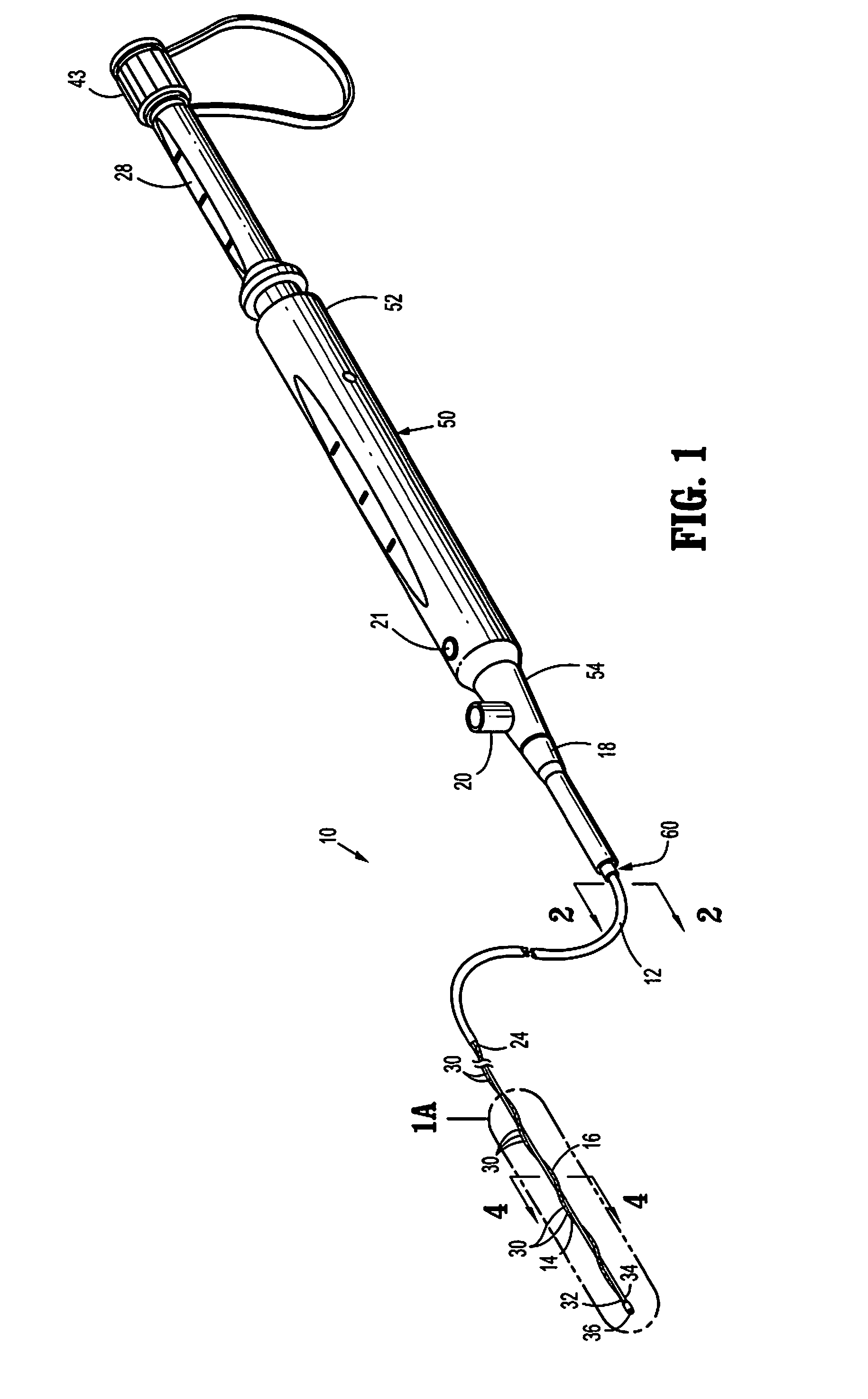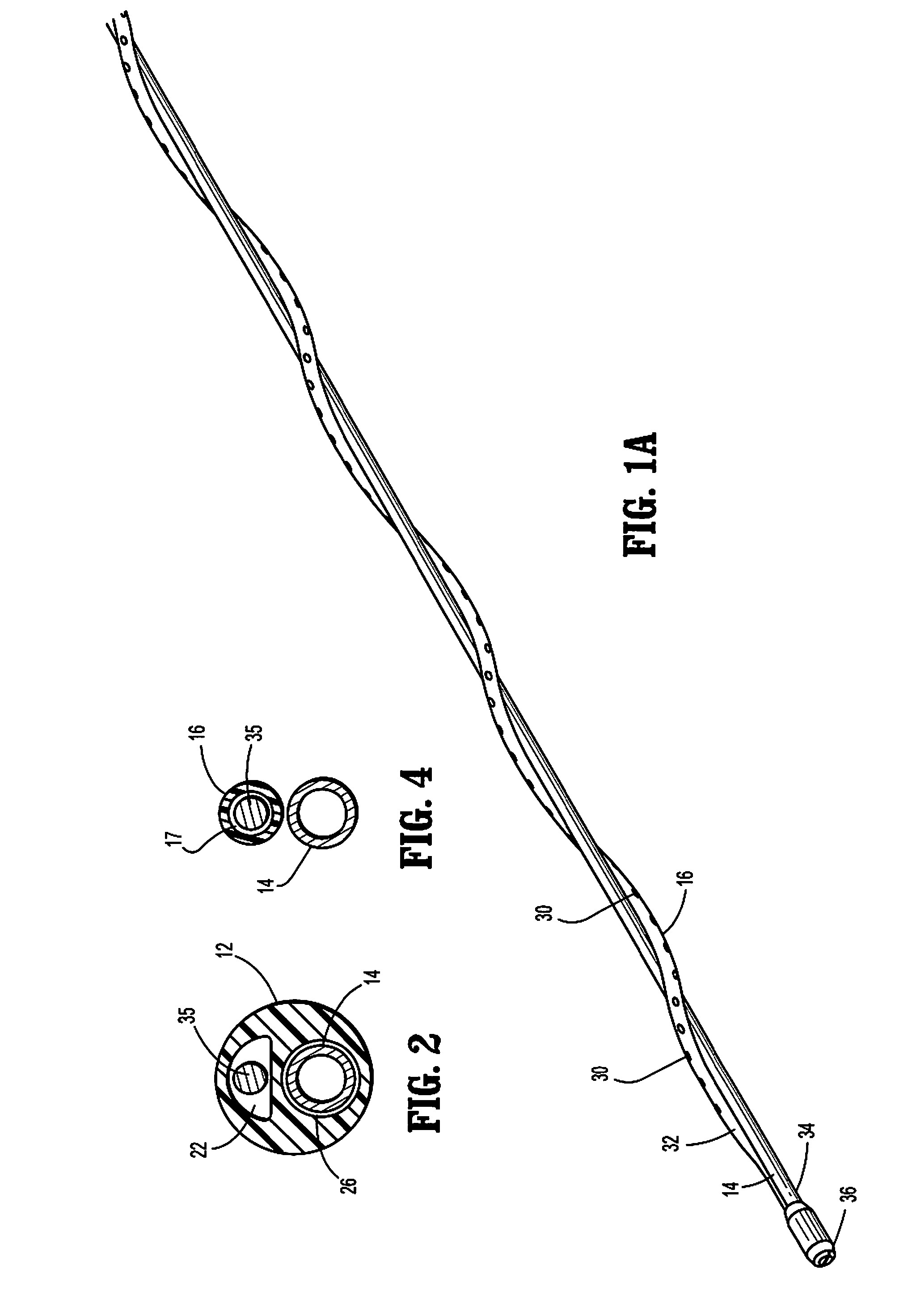Spirally conformable infusion catheter
a catheter and conformation technology, applied in the field of infusion catheters, can solve the problems of difficulty in adequately conforming to and delivering, and the coil may be too small to treat, and achieve the effect of convenient and convenient use, good contact and/or efficient delivery
- Summary
- Abstract
- Description
- Claims
- Application Information
AI Technical Summary
Benefits of technology
Problems solved by technology
Method used
Image
Examples
Embodiment Construction
[0024]Embodiments of the presently disclosed catheter assembly will now be described in detail with reference to the drawings wherein like reference numerals identify similar or identical elements in each of the several views. In the discussion that follows, the term “proximal” or “trailing” will refer to the portion of a structure that is closer to a user, while the term “distal” or “leading” will refer to the portion of the structure that is farther from the user. In addition, the term spiral as used in association with the infusion tube and the central member means that the infusion tube extends along and at least partially around the central member in a helical, coiled or like configuration.
[0025]Referring initially to FIGS. 1-4, a catheter assembly 10 constructed in accordance with the principles of the present disclosure includes a handle housing 50, a movable handle 28, a catheter body 12, a central member 14, and an infusion tube 16. Catheter body 12 extends at least partial...
PUM
 Login to View More
Login to View More Abstract
Description
Claims
Application Information
 Login to View More
Login to View More - R&D
- Intellectual Property
- Life Sciences
- Materials
- Tech Scout
- Unparalleled Data Quality
- Higher Quality Content
- 60% Fewer Hallucinations
Browse by: Latest US Patents, China's latest patents, Technical Efficacy Thesaurus, Application Domain, Technology Topic, Popular Technical Reports.
© 2025 PatSnap. All rights reserved.Legal|Privacy policy|Modern Slavery Act Transparency Statement|Sitemap|About US| Contact US: help@patsnap.com



